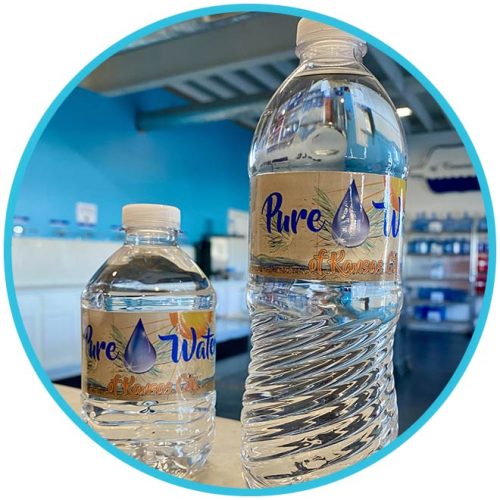Drug pollution or pharmaceutical pollution is pollution of the environment with pharmaceutical drugs and their metabolites, which reach the aquatic environment (groundwater, rivers, lakes, and oceans) through wastewater. Drug pollution is therefore mainly a form of water pollution.
"Pharmaceutical pollution is now detected in waters throughout the world," said a scientist at the Cary Institute of Ecosystem Studies in Millbrook, New York.[1] "Causes include aging infrastructure, sewage overflows and agricultural runoff. Even when wastewater makes it to sewage treatment facilities, they aren't equipped to remove pharmaceuticals."[1]
Sources and effects
 Most such pollution comes simply from the drugs having been cleared and excreted in the urine. The portion that comes from expired or unneeded drugs that are flushed unused down the toilet is smaller, but it is also important, especially in hospitals (where its magnitude is greater than in residential contexts). Other sources include agricultural runoff (because of antibiotic use in livestock) and pharmaceutical manufacturing. Drug pollution is implicated in the sex effects of water pollution. It is suspected as a contributor (besides industrial pollution) in fish kills, amphibian dieoffs, and amphibian pathomorphology.
Most such pollution comes simply from the drugs having been cleared and excreted in the urine. The portion that comes from expired or unneeded drugs that are flushed unused down the toilet is smaller, but it is also important, especially in hospitals (where its magnitude is greater than in residential contexts). Other sources include agricultural runoff (because of antibiotic use in livestock) and pharmaceutical manufacturing. Drug pollution is implicated in the sex effects of water pollution. It is suspected as a contributor (besides industrial pollution) in fish kills, amphibian dieoffs, and amphibian pathomorphology.
Prevention
The main action for preventing drug pollution is to incinerate unwanted pharmaceutical drugs rather than flushing them down the drain. Burning them chemically degrades their active molecules, with few exceptions. The resulting ash can be further processed before landfilling, such as to remove and recycle any heavy metals that may be present.[citation needed]
There are now programs in many cities that provide collection points at places including drug stores, grocery stores, and police stations. People can bring their unwanted pharmaceuticals there for safe disposal, instead of flushing them (externalizing them to the waterways) or throwing them in the trash (externalizing them to the landfill, where they can become leachate).
Another aspect of drug pollution prevention is environmental law and regulation, although this faces problems of enforcement costs, enforcement corruption and negligence (see below), and, where enforcement succeeds, increased costs of doing business. The lobbying of pros and cons is ongoing.[2][3]
Manufacturing
One extreme example of drug pollution was found in India in 2009 in an area where pharmaceutical manufacturing activity is concentrated.[4] Not all pharmaceutical manufacturing contributes to the problem. In places where environmental law and regulation are adequately enforced, the wastewater from the factories is cleaned to a safe level.[4] But to the extent that the market rewards "looking the other way" in developing nations, whether through local corruption (bribed inspectors or regulators) or plausible deniability, such protections are circumvented. This problem belongs to everyone, because consumers in well-regulated places constitute the biggest customers of the factories that operate in the inadequately regulated or inspected places, meaning that externality is involved.
References
- HealthDay News journalists, "Antihistamines Adding to Drug Pollution in Streams", U.S. News.
- Gilbert, Natasha (2012-11-21), "Drug-pollution law all washed up: EU initiative to clean up waterways faces tough opposition", Nature News.
- Editorial board (2012-11-21), "Water wars: environmental protections must not wait until a population is about to disappear", Nature, 491: 496, doi:10.1038/491496a.
- Mason, Margie (2009-01-26), "World's Highest Drug Pollution Levels Found In Indian Stream", Huffington Post.
- G.Vijay "Chemicals and Pharmaceuticals in South India: Sun-Rise Industrialisation or Global Cost Shifting of Dirty Goods Manufacturing", in Hans Lofgren and Prakash Sarangi (eds) (2009) The Politics and Culture of Globalisation: India and Australia, Social Science Press, New Delhi.
- G.Vijay 'Systemic Failure of Regulation: The Political Economy of Pharmaceutical and Bulk Drug Manufacturing' in Hans Lofgren (ed) (2013)The politics of the pharmaceutical industry and access to medicines : world pharmacy and India, Social Science Press, New Delhi.
External links
- Pharmaceuticals and Personal Care Products in Water – US Environmental Protection Agency
This article uses material from the Wikipedia article "Drug pollution", which is released under the Creative Commons Attribution-Share-Alike License 3.0.







Follow Us!